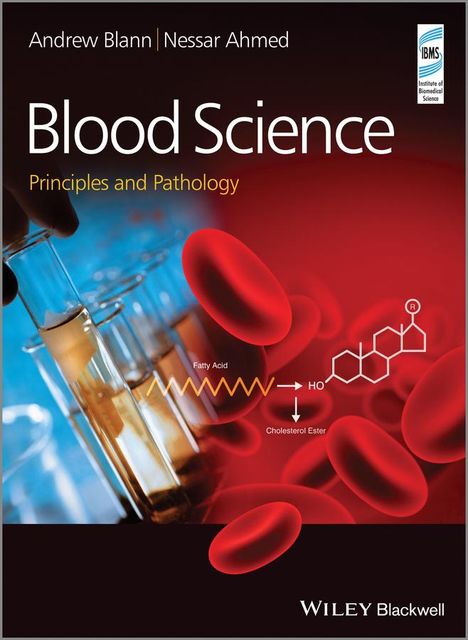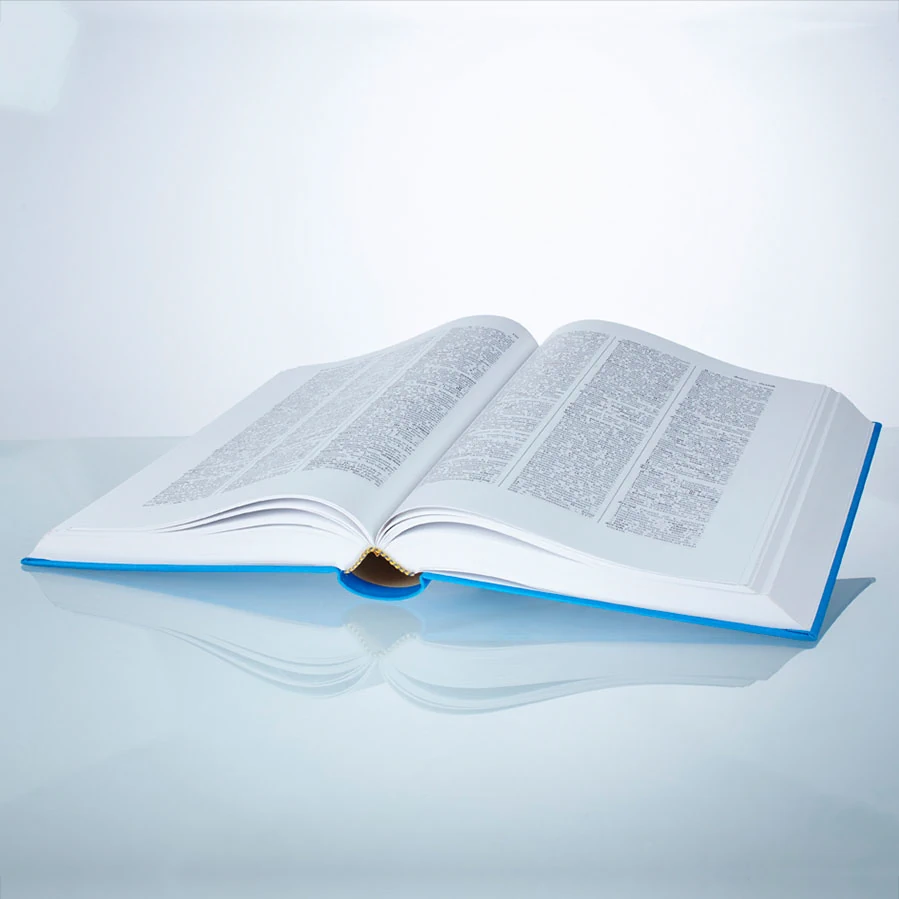Andrew Blann: Blood Science
Blood Science
Buch
- Principles and Pathology
- Verlag:
- Wiley, 03/2014
- Einband:
- Gebunden
- Sprache:
- Englisch
- ISBN-13:
- 9781118351383
- Artikelnummer:
- 4034151
- Umfang:
- 556 Seiten
- Auflage:
- 1. Auflage
- Copyright-Jahr:
- 2014
- Gewicht:
- 1225 g
- Maße:
- 246 x 196 mm
- Stärke:
- 28 mm
- Artikelnummer:
- 4034151
- Erscheinungstermin:
- 17.3.2014
- Hinweis
-
Achtung: Artikel ist nicht in deutscher Sprache!
Weitere Ausgaben von Blood Science |
Preis |
|---|
Inhaltsangabe
Preface, xiiiAcknowledgements, xv
List of Abbreviations, xvii
About the Companion Website, xxi
1 Introduction to Blood Science, 1
1.1 What is blood science?, 1
1.2 Biochemistry, 6
1.3 Blood transfusion, 8
1.4 Genetics, 10
1.5 Haematology, 14
1.6 Immunology, 17
1.7 The role of blood science in modern healthcare, 19
1.8 What this book will achieve, 22
Summary, 23
References, 23
Further reading, 23
Web sites, 23
2 Analytical Techniques in Blood Science, 25
2.1 Venepuncture, 25
2.2 Anticoagulants, 26
2.3 Sample identification and tracking, 27
2.4 Technical and analytical confidence, 27
2.5 Major techniques, 32
2.6 Molecular genetics, 43
2.7 Point of care testing, 47
2.8 Health and safety in the laboratory, 48
Summary, 49
Further reading, 50
Web sites, 50
3 The Physiology of the Red Blood Cell, 51
3.1 Introduction, 51
3.2 The development of blood cells, 52
3.3 Erythropoiesis, 56
3.4 The red cell membrane, 58
3.5 The cytoplasm of the red cell, 60
3.6 Oxygen transport, 66
3.7 Recycling the red cell, 68
3.8 Red cell indices in the full blood count, 69
3.9 Morphology of the red cell, 72
Summary, 74
Further reading, 74
4 The Pathology of the Red Blood Cell, 75
4.1 Introduction: diseases of red cells, 75
4.2 Anaemia resulting from attack on, or stress to, the bone marrow, 78
4.3 Anaemia due to deficiency, 80
4.4 Intrinsic defects in the red cell, 85
4.5 External factors acting on healthy cells, 100
4.6 Erythrocytosis and polycythaemia, 103
4.7 Molecular genetics and red cell disease, 105
4.8 Inclusion bodies, 105
4.9 Case studies, 105
Summary, 107
References, 107
Further reading, 107
5 White Blood Cells in Health and Disease, 109
5.1 Introduction, 109
5.2 Leukopoiesis, 111
5.3 Neutrophils, 115
5.4 Lymphocytes, 116
5.5 Monocytes, 117
5.6 Eosinophils, 118
5.7 Basophils, 119
5.8 Leukocytes in action, 120
5.9 White cells in clinical medicine, 127
5.10 Case studies, 132
Summary, 132
Further reading, 133
6 White Blood Cell Malignancy 135
6.1 The genetic basis of leukocyte malignancy, 135
6.2 Tissue techniques in haemato-oncology, 139
6.3 Leukaemia, 141
6.4 Lymphoma, 149
6.5 Myeloma and related conditions, 152
6.6 Myelofibrosis and myelodysplasia, 157
6.7 Case studies, 157
Summary, 158
Further reading, 159
Guidelines, 159
7 The Physiology and Pathology of Haemostasis, 161
7.1 The blood vessel wall, 162
7.2 Platelets, 163
7.3 The coagulation pathway, 165
7.4 Haemostasis as the balance between thrombus formation and removal, 168
7.5 The haemostasis laboratory, 171
7.6 The pathology of thrombosis, 173
Summary, 175
Further reading, 175
8 The Diagnosis and Management of Disorders of Haemostasis, 177
8.1 Thrombosis 1: overactive platelets and thrombocytosis, 177
8.2 Thrombosis 2: overactive coagulation, 181
8.3 Haemorrhage 1: platelet underactivity and thrombocytopenia, 193
8.4 Haemorrhage 2: coagulation underactivity, 199
8.5 Disseminated intravascular coagulation, 203
8.6 Molecular genetics in haemostasis, 204
8.7 Case studies, 205
Summary, 206
References, 206
Further reading, 207
Guidelines, 207
Web sites, 207
9 Immunopathology, 209
9.1 Introduction, 209
9.2 Basics of the immune system, 210
9.3 Humoral immunity, 212
9.4 Immunopathology 1: immunodeficiency, 215
9.5 Immunopathology 2: hypersensitivity, 221
9.6 Immunopathology 3: autoimmune disease, 226
9.7 Immunotherapy, 232
9.8 The immunology laboratory, 234
9.9 Case studies, 238
Summary, 239
References, 240
Further reading, 240
Guidelines, 240
Web sites, 240
10 Immunogenetics and Histocompatibility, 241
10.1 The genetics of antigen recognition, 241
10.2 Human leukocyte antigens, 245
10.3 Transplantation, 251
10.4 Autoimmunity and human leukocyte
Klappentext
lood Science is a relatively new discipline which merges biochemistry, haematology, immunology, transfusion science and genetics. This bringing together of traditional disciplines requires a corresponding change in education and training for healthcare scientists and Blood Science: Principles and Pathology is written in response to this emerging need. An introduction to the subject and an overview of the techniques used in blood science are followed by a series of chapters based on groups of analytes investigated in blood - red blood cells, white blood cells and platelets, followed by the constituents of plasma, including waste products, electrolytes, glucose, lipids, enzymes, hormones, nutrients, drugs, poisons and others. Each chapter is supported by learning objectives, summaries and further information, and a focus is given to chapter specific case studies with interpretation to demonstrate how laboratory data in conjunction with clinical details is utilised when investigating patients with actual or suspected disease. Finally, a separate chapter offers more detailed case reports that integrate the different aspects of blood science. Undergraduate students taking blood science modules as part of their BSc programmes in Biomedical and Healthcare Sciences will appreciate the level of integration between clinical biochemistry and haematology. In addition, this book will provide suitable initial reading for those students embarking on blood science modules on MSc programmes and will be of value to new graduates entering the profession and starting their career in blood science departments by supplementing practice-based training with the required theoretical underpinning. Blood Science is a relatively new discipline which merges biochemistry, haematology, immunology, transfusion science and genetics. This bringing together of traditional disciplines requires a corresponding change in education and training for healthcare scientists and Blood Science: Principles and Pathology is written in response to this emerging need. An introduction to the subject and an overview of the techniques used in blood science are followed by a series of chapters based on groups of analytes investigated in blood - red blood cells, white blood cells and platelets, followed by the constituents of plasma, including waste products, electrolytes, glucose, lipids, enzymes, hormones, nutrients, drugs, poisons and others. Each chapter is supported by learning objectives, summaries and further information, and a focus is given to chapter specific case studies with interpretation to demonstrate how laboratory data in conjunction with clinical details is utilised when investigating patients with actual or suspected disease. Finally, a separate chapter offers more detailed case reports that integrate the different aspects of blood science. Undergraduate students taking blood science modules as part of their BSc programmes in Biomedical and Healthcare Sciences will appreciate the level of integration between clinical biochemistry and haematology. In addition, this book will provide suitable initial reading for those students embarking on blood science modules on MSc programmes and will be of value to new graduates entering the profession and starting their career in blood science departments by supplementing practice-based training with the required theoretical underpinning.This book is approved by the Institute of Biomedical Science and written by its expert writers, many of whom work on the Institute's advisory panels.

Andrew Blann, Nessar Ahmed
Blood Science
EUR 239,33*



